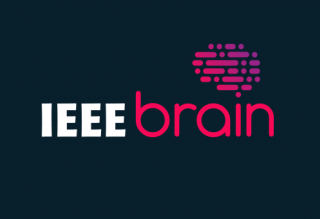- Our Story
- Publications & Resources
- Publications & Resources
- Publications
- IEEE Signal Processing Magazine
- IEEE Journal of Selected Topics in Signal Processing
- IEEE Signal Processing Letters
- IEEE Transactions on Computational Imaging
- IEEE Transactions on Image Processing
- IEEE Transactions on Information Forensics and Security
- IEEE Transactions on Multimedia
- IEEE Transactions on Signal and Information Processing over Networks
- IEEE Transactions on Signal Processing
- IEEE TCI
- IEEE TSIPN
- Data & Challenges
- Submit Manuscript
- Guidelines
- Information for Authors
- Special Issue Deadlines
- Overview Articles
- Top Accessed Articles
- SPS Newsletter
- SigPort
- SPS Resource Center
- Publications FAQ
- Blog
- News
- Dataset Papers
- Conferences & Events
- Community & Involvement
- Professional Development
- For Volunteers
- Information for Authors-OJSP
-
Home
Conferences Events IEEE Signal Processing Magazine IEEE SPL Article IEEE TIFS Article IEEE TMM Article IEEE TSP Article Jobs in Signal Processing Lectures Machine Learning Seasonal Schools Signal Processing News SPM Article SPS Distinguished Lectures SPS Newsletter Article SPS Webinar SPS Webinars SPS Webinar Series Webinar webinars
-
Our Story
What is Signal Processing?

The technology we use, and even rely on, in our everyday lives –computers, radios, video, cell phones – is enabled by signal processing. Learn More » -
Publications & Resources
-
SPS Resources
- Signal Processing Magazine The premier publication of the society.
- SPS Newsletter Monthly updates in Signal Processing
- SPS Resource Center Online library of tutorials, lectures, and presentations.
- SigPort Online repository for reports, papers, and more.
- SPS Feed The latest news, events, and more from the world of Signal Processing.
-
SPS Resources
-
Conferences & Events
-
Community & Involvement
-
Membership
- Join SPS The IEEE Signal Processing Magazine, Conference, Discounts, Awards, Collaborations, and more!
- Chapter Locator Find your local chapter and connect with fellow industry professionals, academics and students
- Women in Signal Processing Networking and engagement opportunities for women across signal processing disciplines
- Students Scholarships, conference discounts, travel grants, SP Cup, VIP Cup, 5-MICC
- Young Professionals Career development opportunities, networking
- Get Involved
-
Technical Committees
- Applied Signal Processing Systems
- Audio and Acoustic Signal Processing
- Bio Imaging and Signal Processing
- Computational Imaging
- Image Video and Multidimensional Signal Processing
- Information Forensics and Security
- Machine Learning for Signal Processing
- Multimedia Signal Processing
- Sensor Array and Multichannel
- Signal Processing for Communication and Networking
- Signal Processing Theory and Methods
- Speech and Language Processing
- Technical Working Groups
- More TC Resources
-
Membership
-
Professional Development
-
Professional Development
- Signal Processing Mentorship Academy (SigMA) Program
- Micro Mentoring Experience Program (MiME)
- Distinguished Lecturer Program
- Distinguished Lecturers
- Distinguished Lecturer Nominations
- Past Lecturers
- Distinguished Industry Speaker Program
- Distinguished Industry Speakers
- Distinguished Industry Speaker Nominations
- Industry Resources
- IEEE Training Materials
- Jobs in Signal Processing: IEEE Job Site
-
Career Resources
- SPS Education Program Educational content in signal processing and related fields.
- Distinguished Lecturer Program Chapters have access to educators and authors in the fields of Signal Processing
- Job Opportunities Signal Processing and Technical Committee specific job opportunities
- Job Submission Form Employers may submit opportunities in the area of Signal Processing.
-
Professional Development
-
For Volunteers
-
For Board & Committee Members
- Board Agenda/Minutes* Agendas, minutes and supporting documentation for Board and Committee Members
- SPS Directory* Directory of volunteers, society and division directory for Board and Committee Members.
- Membership Development Reports* Insight into the Society’s month-over-month and year-over-year growths and declines for Board and Committee Members
-
For Board & Committee Members
Popular Pages
Today's:
- IEEE JSTSP Special Series on Artificial Intelligence for Smart Agriculture
- Memory-Tuning: A Unified Parameter-Efficient Tuning Method for Pre-Trained Language Models
- IEEE Transactions on Information Forensics and Security
- About Transactions on Information Forensics and Security
- Volunteer Opportunities
- A Message from the New Society President
- Information for Authors
- Conferences Board
All time:
- Information for Authors
- Submit a Manuscript
- IEEE Transactions on Image Processing
- IEEE Transactions on Information Forensics and Security
- IEEE Transactions on Multimedia
- IEEE Transactions on Audio, Speech and Language Processing
- IEEE Signal Processing Letters
- IEEE Transactions on Signal Processing
- Conferences & Events
- IEEE Journal of Selected Topics in Signal Processing
- Information for Authors-SPL
- Conference Call for Papers
- Signal Processing 101
- IEEE Signal Processing Magazine
- Guidelines
Last viewed:
- Information for Authors
- Volunteer Opportunities
- A Message from the New Society President
- About Transactions on Information Forensics and Security
- IEEE Transactions on Information Forensics and Security
- Memory-Tuning: A Unified Parameter-Efficient Tuning Method for Pre-Trained Language Models
- Conferences Board
- IEEE JSTSP Special Series on Artificial Intelligence for Smart Agriculture
- IEEE Honoraria and Awards Terms and Conditions
- Unified EDICS
- Call for Nominations for Chair, Women in Signal Processing Committee (WISP)
- IEEE Transactions on Audio, Speech and Language Processing
- (ISBI 2026) 2026 IEEE 23rd International Symposium on Biomedical Imaging
- 2025 IEEE SPS Scholarship Program Now Open!
- 2025 IEEE SPS Scholarship Program Now Open!
Newsletter Menu
Newsletter Categories
Top Reasons to Join SPS Today!
1. IEEE Signal Processing Magazine
2. Signal Processing Digital Library*
3. Inside Signal Processing Newsletter
4. SPS Resource Center
5. Career advancement & recognition
6. Discounts on conferences and publications
7. Professional networking
8. Communities for students, young professionals, and women
9. Volunteer opportunities
10. Coming soon! PDH/CEU credits
Click here to learn more.
News and Resources for Members of the IEEE Signal Processing Society
IEEE BMC Newsletter – Spring 2015
Published in TC News on 1 May 2015

Contributed by Venu Govindaraju, republished from the IEEE BMC Newsletter
Welcome Message from the President of the IEEE Biometrics Council
It is my great pleasure to begin my term as the President of the IEEE Biometrics Council this month (January 2015). I feel truly privileged to have this opportunity to serve the biometrics community and continue to build upon the strong foundations laid out by my predecessors. I am indeed fortunate to have the support of an experienced and motivated Executive Council (ExCom) that has already been working tirelessly to realize the vision of the council.
We are now elevated to being a “regular council” making 2014 the most fruitful year since inception. The council has grown steadily and succeeded in introducing a variety of new activities given the collective efforts and dedication of many individuals within and outside the council. In particular, I would like to acknowledge my predecessor Prof. Tieniu Tan for his outstanding contributions in promoting the Council across the various IEEE societies and navigating all the council reviews which eventually earned us the elevated status.
Increasing deployment of biometrics technologies for large scale applications like national identification programs has created new opportunities and challenges for developers, researchers and policy makers. There are high expectations from the biometrics community. Effective new technologies must meet the emerging needs of high security; they must also cater to the needs of the underprivileged for the social good. There is an urgent need to organize key activities and partnerships with stakeholders in the government, academia and industry to meet these expectations. I look forward to working with all of you as we address these issues and create new success stories in our mission to serve the biometrics community.
Venu Govindaraju, President, IEEE Biometrics Council
Fingerprint Algorithm Evaluation: New Report from 30,000 Search Subjects
NIST has released new Fingerprint Vendor Technology Evaluation Report (FpVTE) that describes open-set identification results from fingerprint matching algorithms submitted by 18 different vendors. This evaluation report is based on 30,000 subjects (10,000 mates and 20,000 nonmates) fingerprints and is the first large-scale one-to-many fingerprint evaluation since FpVTE 2003 conducted about a decade ago. Some key results in this report:
- Most accurate submissions achieved miss rate (FNIR) of 1.9% for index fingers, 0.27% for two index fingers, 0.45% for 4-finger and 0.09% 10-finger IDFlats. These numbers are at 0.001 of FPIR and 30,000 search subjects.
- Using more fingers improved accuracy and two-index finger accuracy was better than 4-finger IDFlats.
- The fastest submissions were not most accurate. Accurate submissions could decrease search time with minimal loss in accuracy. The ‘gap’ between the most accurate submissions and ‘next tier’ was much closer than FpVTE 2003.
This evaluation allowed each of the participants to make two submissions per ‘class’ while all the data used was operational data which was not shared with any of the participating vendors. The entire evaluation report (NISTIR 8034) can be freely downloaded from this weblink: http://nvlpubs.nist.gov/nistpubs/ir/2014/NIST.IR.8034.pdf
Spotlight: Unique Identification Authority of India
The unique identification authority of India (UIDAI) is leading Adddhar project which is believed to be the largest biometrics based human identification initiative in the world. This project aims to provide a unique identification numbers (Aadhaar) to all the residents of India (~ 1.2 billion people), with priority for underprivileged families who lack proper identification to open bank accounts or access cash subsidies. The uniqueness is ensured by linking the Aadhaar numbers to left and right iris scans, all ten fingerprints and face photograph (along with demographic information such as name, date of birth, gender and address), coupled with a de-duplication process for each new enrolment. and for the underprivileged. The vision of UIDAI is to empower all residents with a unique digital identity and a digital platform to authenticate anytime, anywhere Dr. Vijay S Madan is the Director General and Mission Director of the UIDAI since 1 April 2013. We have asked him few questions whose answers appear in our spotlight section on next page.
The latest full issue of the IEEE Biometrics Council newsletter is available here:
http://ieee-biometrics.org/images/PDF/newsletter_jan_2015.pdf
Open Calls
Society News
- SPS TC Jobs Marketplace
- Signal Processing Conferences
- Nominations Open for 2015 Major SPS Awards
- New Society Officers for 2016
- Results of the SP Cup 2015
- IEEE-USA Offers Free e-Books to Members in April and May
- vTools Release Announcement; WebEx Updates
- IEEE Panel of Conference Organizers is Now Open for Registration: 16-18 July
- IEEE Member Discounts Benefit Everyone
- The IEEE of 2030 Begins Now
- Help Conference Authors Meet Open Access Publishing Requirements
- IEEE Meetings, Conferences & Events (MCE) Conference Education Program Webinars
- Member Discounts: Learn About Risk Management
- Call for Prize Paper Nominations: IEEE W.R.G. Baker Award and IEEE Donald G. Fink Award
- Thank You for Submitting Officer, Meeting, and Financial Reports
- 2015 Member-Driven Initiatives - Funding Available
Research Opportunities
PhD Theses
SPS Social Media
- IEEE SPS Facebook Page https://www.facebook.com/ieeeSPS
- IEEE SPS X Page https://x.com/IEEEsps
- IEEE SPS Instagram Page https://www.instagram.com/ieeesps/?hl=en
- IEEE SPS LinkedIn Page https://www.linkedin.com/company/ieeesps/
- IEEE SPS YouTube Channel https://www.youtube.com/ieeeSPS
Home | Sitemap | Contact | Accessibility | Nondiscrimination Policy | IEEE Ethics Reporting | IEEE Privacy Policy | Terms | Feedback
© Copyright 2025 IEEE - All rights reserved. Use of this website signifies your agreement to the IEEE Terms and Conditions.
A public charity, IEEE is the world's largest technical professional organization dedicated to advancing technology for the benefit of humanity.








